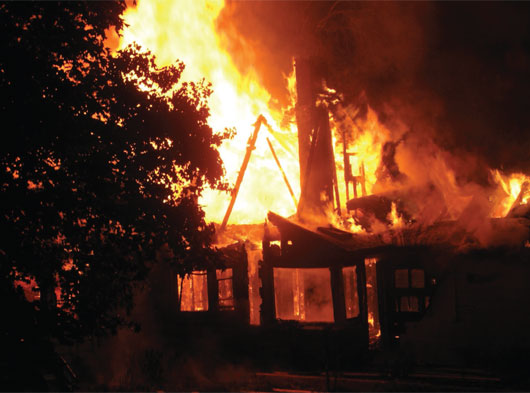Stress alarm for smoke-divers
Smoke-divers are exposed to high temperatures, physical exhaustion and stress. A new sensor system lets them know when the body has had enough.
The warning system depends on measurements from sensors that monitor an individual’s level of activity, and whether she or he is sitting at rest or even lying prone. It combines data from movement sensors such as accelerometers and gyroscopes with heart-rate and skin-temperature measurements. In conjunction, they measure a smoke-diver’s level of heat-stress – as well as whether he is in any danger. The method led to the research team receiving the international pHealth Innovation Award in 2010.
The method has recently been tested by a group of firefighters on a training field for smoke-divers at Rygge Airport in Norway. The aim was to find out how well the warning system, which obtains its data from a sensor system (ESUMS) in the form of a belt fastened closely round the chest, functions in real-life situations.
So far, the results have been very encouraging,” says project manager Trine Seeberg, a senior scientist at SINTEF.
“The equipment we used worked perfectly and the method correctly identified the risk situations that we simulated, so the trials showed that the method could be a useful way of determining whether or not a smoke-diver is in danger,” says Seeberg.
According to the SINTEF scientist, a good deal of fine-tuning remains to be done before it can be brought into service. For example, more tests will have to be carried out in realistic situations, and the sensor platform ought be integrated into smoke-divers’ existing safety equipment.
Many small steps…
Seeberg explains that the core of the system is based on algorithms (sets of mathematical rules for solving specific problems) that describe how the body reacts to heat stress, and that handle physiological and activity data. These emerged in the course of dialogue with the firefighters and via tests in SINTEF’s physiology laboratory, where activity data, plus the heart-rate and skin temperature of exercising subjects were measured and logged.
“These are important data, because smoke-divers are exposed to severe stresses. They often operate under conditions of high temperature, wear insulating clothing, and have to carry equipment that can weigh as much as 15–20 kilos. In practice, it is an extremely demanding task merely to be in a warm room with such clothing and with a pack on your back,” explains Seeberg.
Mobile platform
The sensor system currently communicates with the outside world via a second-generation Bluetooth protocol, which is implemented in most smart-phones.
The system itself does not have a very long range, so the sensors are connected to a mobile phone which is also worn by the smoke-divers.
This in turn sends information in the form of a “hazard threshold score” on a ten-point scale to whoever is monitoring the operation from outside the disaster site. “If the score is more than 8, the smoke-diver is being exposed to a high level of stress and should abandon the operation, while a score of 2 shows that the person is in good physical condition and is operating at a level of activity that is not hazardous to health,” explains the SINTEF scientist.
Capable of further development
The research team believes that with further development, this type of technology could be of use in other areas:
“Workers in many occupations are exposed to challenging environments and might well benefit from alarm systems based on sensors that monitor them continuously. For example, offshore personnel working in cold climates and are exposed to snow and ice are another group that we are focusing on,” says Trine Seeberg.
Christina Benjaminsen



